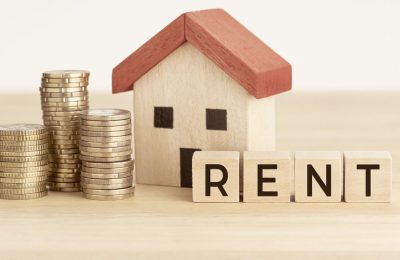Renting a space in a historic building offers a unique charm, evoking a timeless beauty that modern constructions often lack. These architectural treasures can provide a living experience steeped in history and cultural significance, appealing to those who appreciate vintage aesthetics and the stories etched into the walls. However, it’s crucial for potential renters to grasp the full picture, complete with the joys and challenges that come with historic properties.

[Image source: Deposit photos]
Distinguishing between modern and period homes
There are several key differences between period and contemporary properties that impact maintenance and tenant satisfaction.
First, the construction differs considerably. Historic buildings typically feature solid wall construction of materials like stone, brick, or timber framing, rather than contemporary cavity wall or framed construction. This construction style can affect insulation, damp prevention, and renovation methods, necessitating awareness from landlords regarding potential renovations to address these issues.
Older homes also often have unique floor plans which tenants should be aware of; lower ceiling heights, narrower hallways and doorways, and smaller, segmented room layouts are common in historic buildings which all add to its charm. Of course, while beautiful and quirky, it can mean getting creative when it comes to accommodating furniture items.
Historic homes commonly utilise traditional materials such as lime plaster, stone, slate, and cast iron, which require specific care too. Modern replacements aren’t always suitable, necessitating careful consideration by landlords when it comes to conducting repairs or updates to prepare the property for tenants.
Maintenance and repairs
Living in historic buildings comes with many perks, but one of the downsides is there’s a greater risk of repairs needed since older structures may face issues with plumbing and electrical systems that have aged or become outdated. Structural concerns, such as foundation settling or roofing problems, are also common in older properties.
These issues can arise unexpectedly, requiring immediate attention to prevent further damage, making it crucial for renters to be prepared for potential maintenance needs. Understanding the specific vulnerabilities of historic buildings can help renters anticipate and address these issues proactively and check for signs of a problem before it develops.
It’s important to clarify who is responsible for maintenance—whether the landlord covers all repairs or if the tenant is expected to contribute to some of the costs. In some rental agreements, tenants might bear the responsibility for minor repairs, while landlords handle major structural issues, for example. Clear communication with the landlord about maintenance responsibilities can help avoid disputes and ensure the property remains in good condition.
Costs of running historic properties
Historic properties can come with both expected and unexpected costs that differ from those associated with modern constructions. The rental costs for historic buildings may vary widely depending on factors such as location, historical significance, and the condition of the property, but in many cases, you’ll pay a premium for the charm and significance of the property itself.
Utility costs can be higher in older buildings due to the absence of energy efficient installations and outdated (or complete lack of) insulation systems. Additionally, insurance premiums for historic properties tend to be higher, reflecting the increased risk of damage or loss to unique architectural features and historical elements.
Renters need to carefully consider these financial aspects when budgeting for a historic rental, weighing the aesthetic and historical value against the potential financial implications of living in an older building.
Navigating the rental agreement
A rental agreement for a historic building requires careful consideration of specific clauses and provisions that may differ from those in agreements for newer properties. It’s crucial for renters to thoroughly review the lease terms as older buildings often require specialised care and attention.
Additionally, conducting a comprehensive property inspection before signing the lease is essential. This should ideally be carried out via a schedule of condition arranged by the landlord or managing company to identify any existing maintenance issues or potential concerns with the building’s infrastructure. This gives renters leverage to negotiate terms or request necessary repairs before moving in.
Renters should also familiarise themselves with local laws and regulations pertaining to historic properties, as these may impose restrictions on renovations or alterations that could impact their living arrangements.
Preserving the history and integrity of the building
Tenants play a crucial role in preserving the character of an architecturally significant property. They act as custodians of the property which means respecting the historical features and paying careful attention to any potential damage from the likes of furniture or décor.
For example, tenants should avoid drilling into the walls to hang frames or shelving as this can lead to holes and damage to delicate plasterwork. Likewise, heavy furniture needs to be carefully placed, since floorboards will typically be older and more fragile. Every care needs to be paid to preserve the character of the home and keep it in its original state.
A further consideration is temperature control – damp and humidity can cause serious damage, resulting in mould or condensation, so using dehumidifiers and understanding how to properly operate period features like sash windows is key. As a resident of an older home, you’re not just preserving the past but also becoming part of the building’s history and contributing to its future.
The opportunity to inhabit a space with a rich cultural heritage allows tenants to engage with local history and preservation efforts, contributing to the preservation of architectural treasures for future generations. While navigating the maintenance challenges and potential drawbacks of historic properties requires diligence and flexibility, the rewards often outweigh the complexities. For those who appreciate the allure of history and architectural significance, renting in a historic building can be a deeply enriching and rewarding choice.









